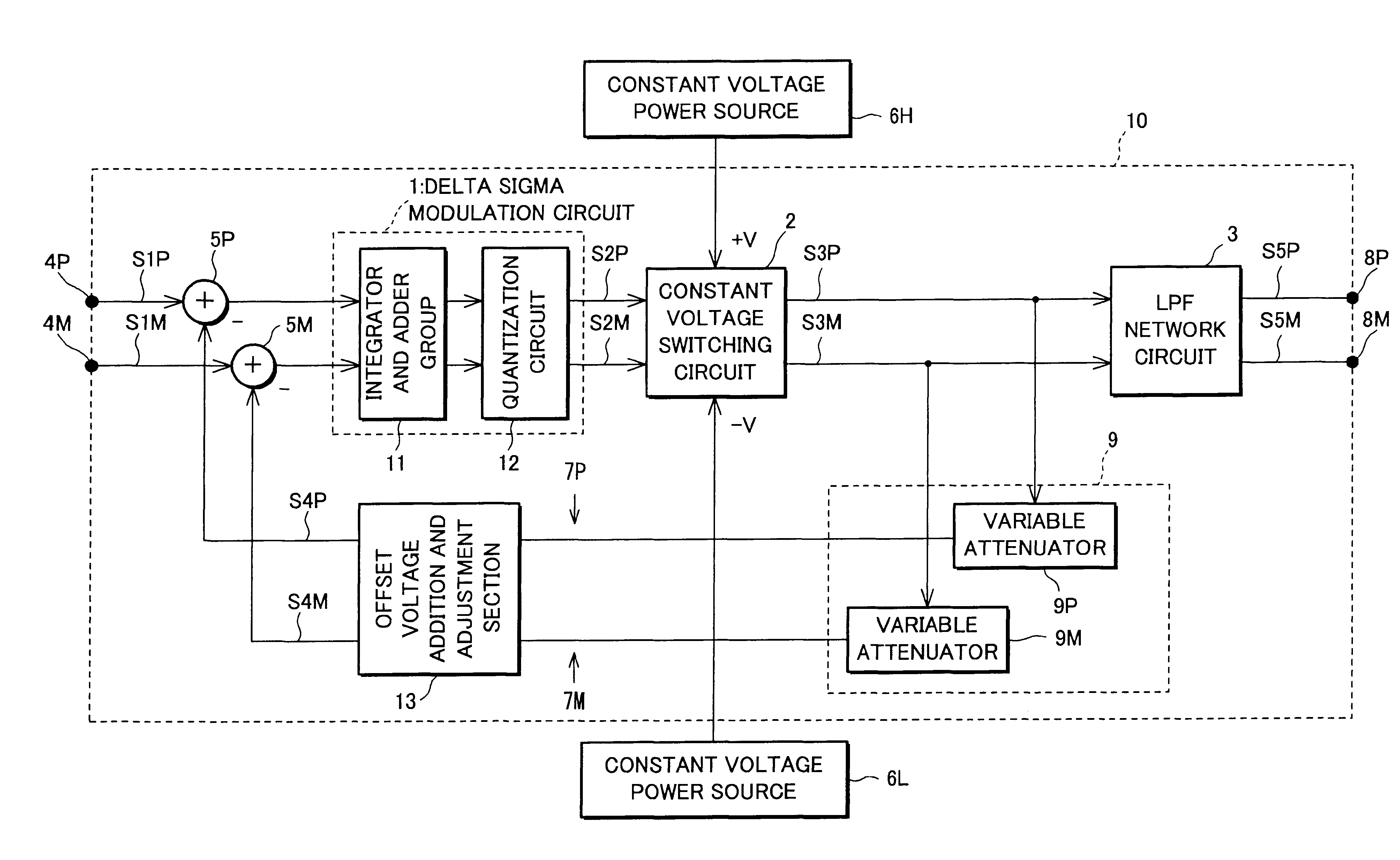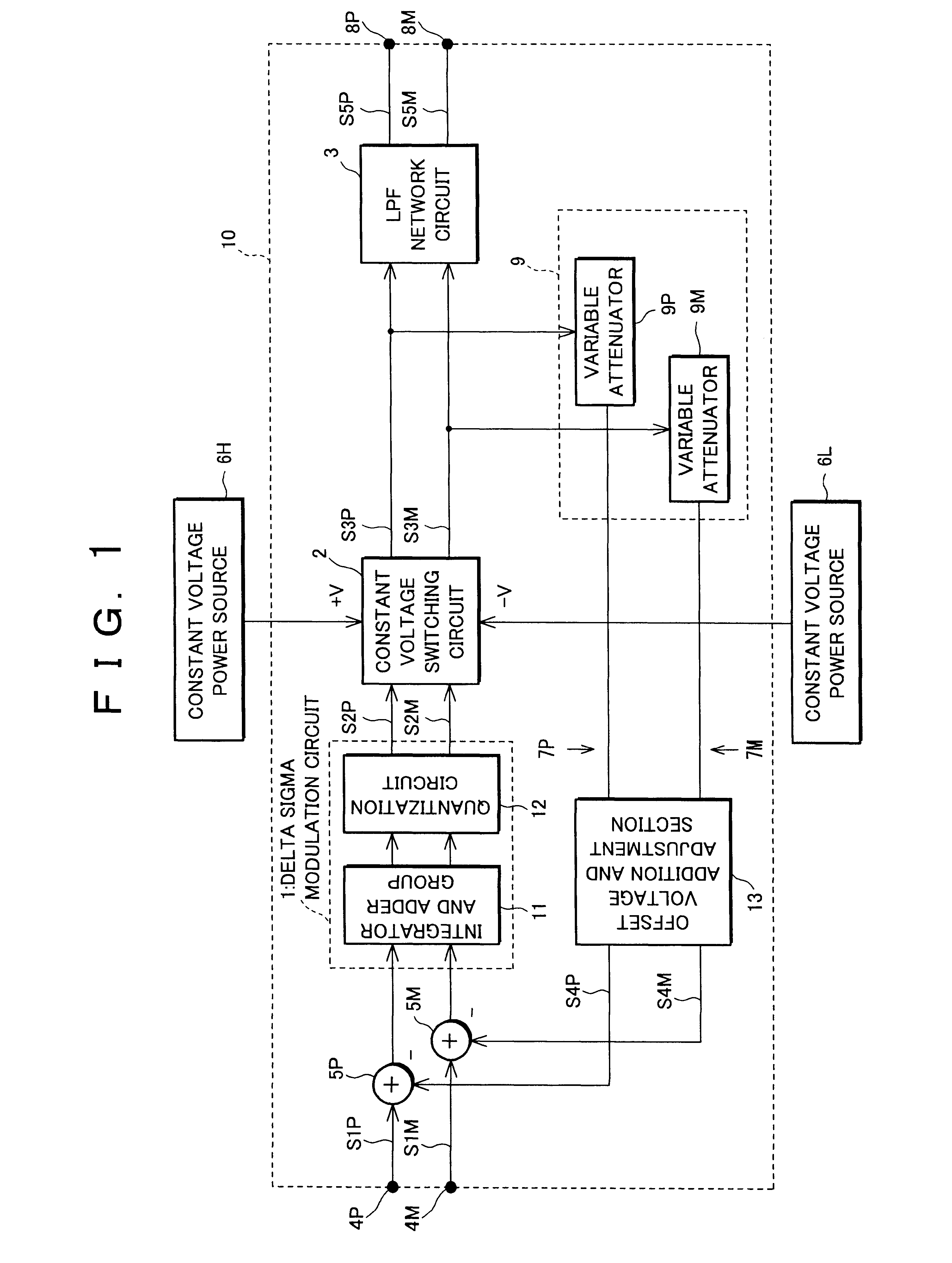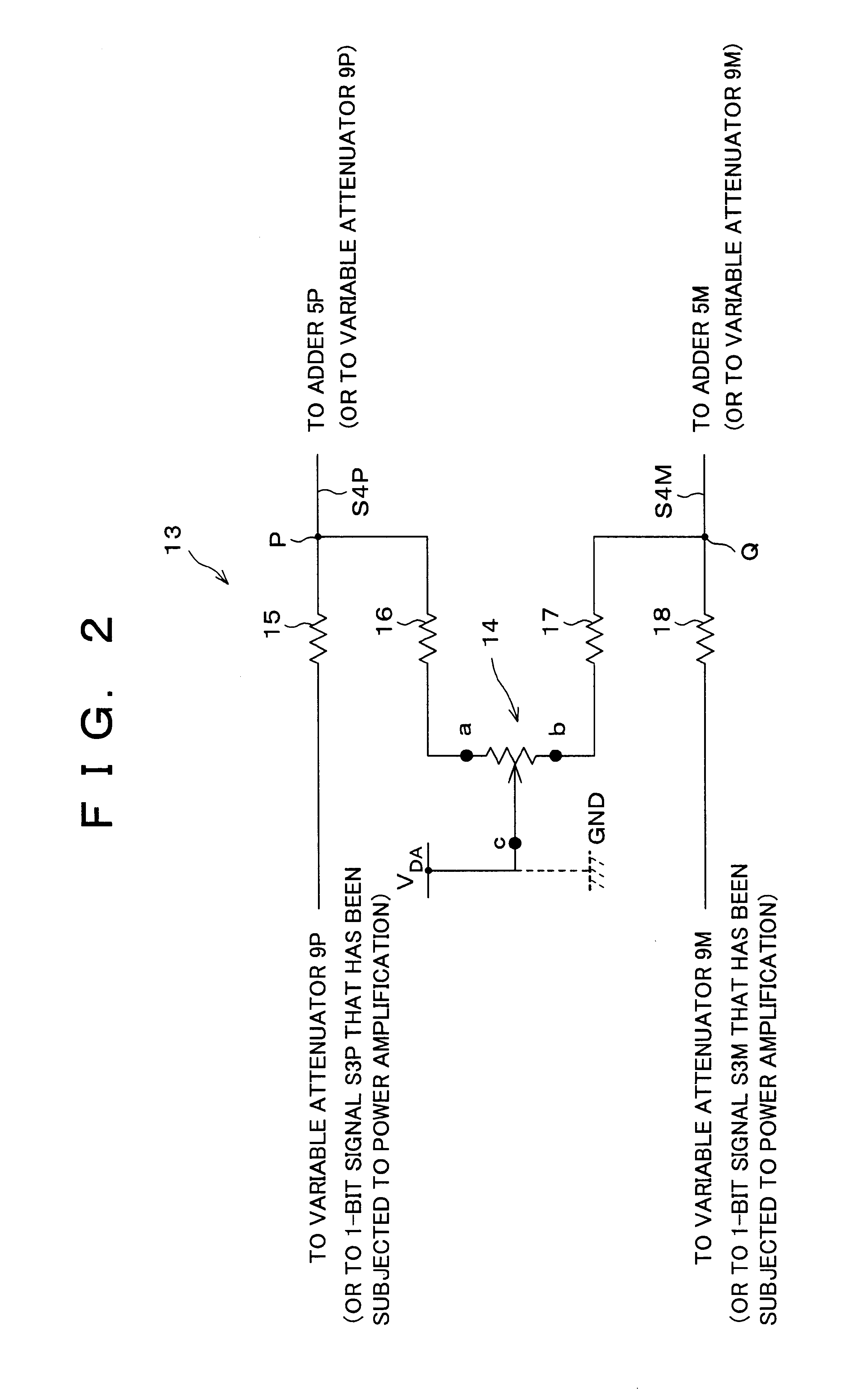Digital switching amplifier
a digital switching amplifier and amplifier technology, applied in the field of digital switching amplifiers, can solve the problems of offset voltage, noise in the lower frequency band, and inability to obtain a target frequency band and a target dynamic rang
- Summary
- Abstract
- Description
- Claims
- Application Information
AI Technical Summary
Benefits of technology
Problems solved by technology
Method used
Image
Examples
Embodiment Construction
The following description deals with one embodiment of the present invention with reference to FIGS. 1 through 4. Note that the same reference numerals are assigned to the members that have the same functions as those shown in FIG. 5.
As shown in FIG. 1, differential input signals are inputted via input terminals 4P and 4M to a digital switching amplifier 10 according to the present invention. The differential input signal is made of a pair of an analog acoustic signal S1P having a positive polarity and an analog acoustic signal S1M having a negative polarity. A delta sigma modulation circuit 1 converts the analog acoustic signals S1P and S1M into 1-bit signals S2P and S2M, respectively. Then, the 1-bit signals S2P and S2N are sent to a constant voltage switching circuit 2 in which constant voltages (+V and -V) are switched and amplified in accordance with the 1-bit signals S2P and S2M so as to be demodulated to analog acoustic signals S52 and S5M by a low pass filter network circuit...
PUM
 Login to View More
Login to View More Abstract
Description
Claims
Application Information
 Login to View More
Login to View More - R&D
- Intellectual Property
- Life Sciences
- Materials
- Tech Scout
- Unparalleled Data Quality
- Higher Quality Content
- 60% Fewer Hallucinations
Browse by: Latest US Patents, China's latest patents, Technical Efficacy Thesaurus, Application Domain, Technology Topic, Popular Technical Reports.
© 2025 PatSnap. All rights reserved.Legal|Privacy policy|Modern Slavery Act Transparency Statement|Sitemap|About US| Contact US: help@patsnap.com



